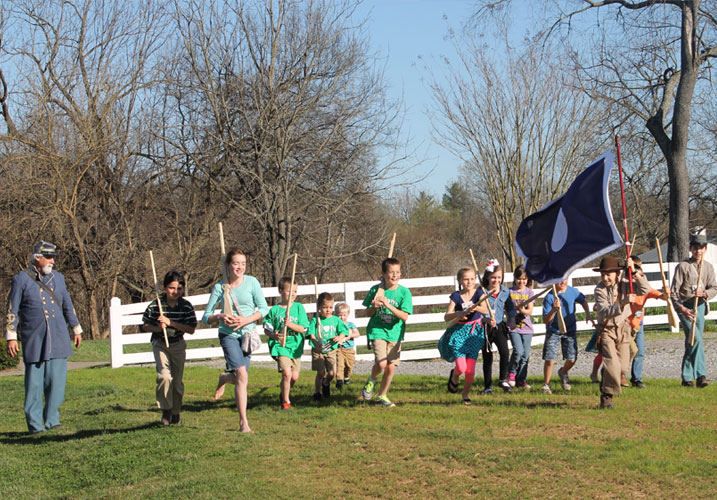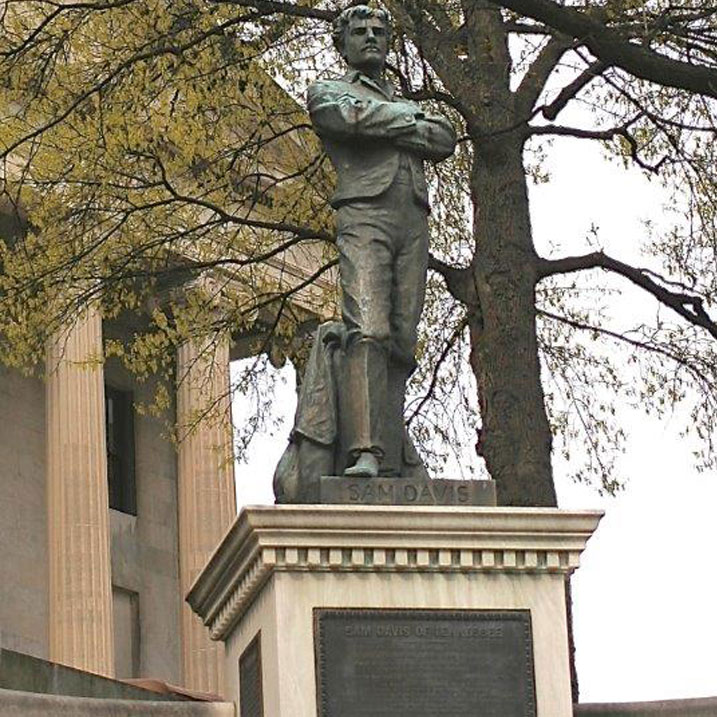
![]() In a word, outstanding. Our family will certainly be back for more.” —Colin H.
In a word, outstanding. Our family will certainly be back for more.” —Colin H.
 he Franklin and Nashville Battlefield sites never cease to imprint on our imaginations feelings of horror and loss. They also demonstrate to us the very essence of heroism and sacrifice that the generation of the 1860s exhibited with unceasing duty.
he Franklin and Nashville Battlefield sites never cease to imprint on our imaginations feelings of horror and loss. They also demonstrate to us the very essence of heroism and sacrifice that the generation of the 1860s exhibited with unceasing duty.
We began our tour at Rippavilla, reminded once again that we were studying real flesh-and-blood people who grew up in families whose women and younger members carried on at home while their men invested their lives for the cause of independence or in seeking to preserve the old Union. The evolution of a plantation house, the lives of people slave and free, are captured in photos, bricks, beds, tables, kitchens, and dolls. The men of Rippavilla fought in the war and survived to continue life four years later, no doubt changed in ways they could not explain. One family of the slaves continued their building and architectural work and passed it on to succeeding generations, some of whom still fulfill that calling in a large firm in Nashville—with their own name on the marquee.

Military Historian, Bill Potter

Mr. Potter Sets the Stage

Hello from Rippavilla Plantation!
Winsted Hill still gives us the panoramic vista that General John Bell Hood beheld, as his Army of Tennessee hurled itself against the entrenchments around Franklin. The beautiful memorials on the hill belie the devastation that occurred down below, but then our monuments freeze only names, flags, and dates of those heroes, long dead and buried elsewhere. We pondered the mistakes of Spring Hill and the impetuous, if not petulant, Hood as he questioned the manhood of his army and lined them up in magnificent array to cross two miles of open fields under artillery fire. We briefly examined the lives of some of the Confederate generals who died in the battle, all from different states, all beginning their military careers as company commanders and ending their lives along the Franklin Pike and Harpeth River as brigadier or major generals leading from the front.

On site of the Confederate Battle Command on Winstead Hill

Sam Turley Describes the Incredible Charge
The war again became personal as we learned of the Carter family and their ordeal of surviving the very vortex of the battle around their house and cotton gin. The tragic but heroic story of their son Tod brought to our memory once again that the boys in gray were fighting to protect and liberate their families and homes. Providence grabbed our attention as we learned of the Ohioans of Emerson Opdyke refusing to sacrifice themselves in front of the lines, only to find themselves in position to save the Union army after the breakthrough in the Carter yard.

Reviewing the Battle at the Carter House

Outside the Bullet-Riddled Farm Office
Our visit to Carnton never disappoints and our tour guide there gave one of the best presentations we’ve ever had. A real family caught up in a nightmare situation, rose to the occasion with love and service to the wounded and the dieing. Their life was changed forever as the “widow of the South” kept the burial records of the boys who died, for years to come. The family cemetery becomes a shrine to the Confederate dead, a no longer anonymous resting places of the fallen. We staged a small memorial attack there, chasing a chastened Mr. Turley to his usual ignominious end.

Relaxing on Carnton Plantation Porch

Stepping Off Into Battle
Wednesday evening we gathered at a local restaurant where we enjoyed a nice meal, sweet fellowship with one another, and a fascinating message on The Great Revival in the Southern Armies by Mr. Potter.

Atop Shy’s Hill — Breakthrough Point of the Battle

General Potter’s New Recruits!
The Battlefield of Nashville is mostly buried under urban sprawl. Shy’s hill has recently been preserved. Though a small area, it is significant in the Confederate line and quietly austere. We talked about Col. Shy and his gallant defense and death there. Our next stop included the well-preserved, though unused in battle, Fort Negley, a powerful example of the art of fortification; the position commanded the approaches to Nashville, a city today no longer in need of defense from external attack. We discussed the earlier campaign of Fort Donelson and the strategic importance of the Tennessee Capitol, a place whose defensive posture could have resisted an attack by ten times the forces of General Hood.

Tennessee Capitol Building

Sam Davis — Boy Hero of Tennessee
Our final stop at the Capitol grounds gave opportunity to briefly examine the importance of various Tennessee luminaries like Presidents Andrew Jackson, James Polk, and Andrew Johnson. As the Volunteer State, the irony of Sgt. York and his memorial reminded us that some men of valor were coerced into service and still represented the finest in the fighting tradition of Tennessee. After all, the old saying was, don’t tell a Tennessean what the fight is about, just tell him where it is.
We appreciate all those who joined us and invite you to join us in Atlanta April 27-18, Sandusky, OH May 11-12 or perhaps even Scotland in July! We hope to see you soon on other fields of the Providential endeavors of the past.






